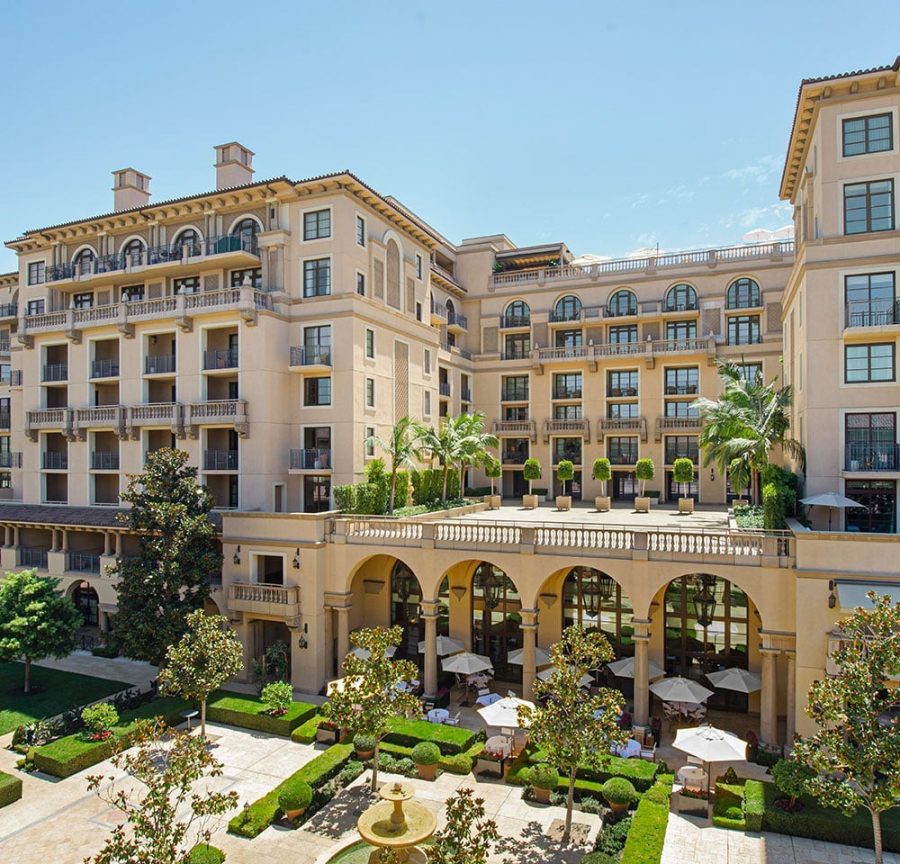It’s official: the United States is still the global Goliath of private wealth. The newly released USA Wealth Report 2025, produced by Henley & Partners — the international leader in residence and citizenship planning — in collaboration with New World Wealth, a respected global data intelligence firm, lays it bare: America is not just wealthy. It is wealthier, and pulling further ahead.
The report, now considered a bellwether for private wealth trends, offers a data-rich snapshot of who holds the money, where they live, how they move — and increasingly — how they plan to move on.
With 6,041,000 millionaires, 10,800 centi-millionaires (individuals with $100 million+ in investable assets), and 852 billionaires, the US holds:
34% of global private wealth
37% of the world’s millionaire population
36% of centi-millionaires
33% of all billionaires
In contrast, China, despite its breakneck economic rise, is a distant second with:
827,900 millionaires

photo: @The Maybourne Beverly Hills / @maybournebeverlyhills.com
2,250 centi-milliona80 billionaires
But here’s where the plot thickens. Despite these record-breaking figures, more Americans than ever before are actively pursuing citizenship and residence options abroad. In 2025 alone, Americans account for over 30% of all investment migration applications submitted through Henley & Partners, a figure that dwarfs traditional demand from countries like Turkey, India, and the UK.
So, who’s authoring this quiet revolution in global wealth mobility? The report’s primary architects, Henley & Partners and New World Wealth, have spent decades tracking not just the size of private wealth — but its movement, direction, and motivation. Their research is used by sovereign governments, family offices, law firms, and global banks to make long-range decisions about mobility, taxation, and global risk.
The Double Life of American Millionaires
According to Basil Mohr-Elzeki, Managing Partner of Henley & Partners North America:
“Securing alternative residences and citizenships is now a strategic form of risk management — a thoughtful ‘Plan B’ that enhances family resilience, unlocks global opportunities, and safeguards multigenerational legacies.”
It’s a shift from simple lifestyle enhancement to serious wealth preservation. And it’s no longer just for a sliver of elites. The report shows a 183% year-on-year rise in enquiries from US nationals for alternative residence and citizenship in Q1 2025 compared to Q1 2024, and a 39% jump from just the previous quarter.
Millionaire Map: Where American Wealth Lives
The top 10 wealthiest US cities remain anchored by legacy powerhouses, but upstarts are stealing the spotlight:
New York City: 384,500 millionaires, 818 centi-millionaires, 66 billionaires
Bay Area: 342,400 millionaires, 756 centi-millionaires, 82 billionaires
Los Angeles: 220,600 millionaires, 516 centi-millionaires, 45 billionaires
Chicago: 120,500 millionaires
Houston: 90,900 millionaires
Dallas: 68,600 millionaires — with 85% growth over the past decade
Scottsdale, Arizona, however, takes the crown for fastest growth: 125% increase in millionaires between 2014 and 2024, driven by its booming tech and entrepreneurial scene. West Palm Beach (112%) and Austin (90%) follow close behind, reflecting a broader shift toward affluent migration into lifestyle-rich, tax-advantageous cities.
America vs. The World
Wealth growth over the last decade further cements the US lead:
US millionaire growth (2014–2024): +78%
China: +74%
UK: -9% (yes, negative)
Germany: +10%
Japan: +5%
Australia: +30%
Switzerland: +28%
Canada: +26%
Italy: +20%
Even among peers, America’s wealth generation is in a league of its own — thanks in part to its dominance in tech innovation, AI, digital infrastructure, and access to capital.
“America is the undisputed world leader when it comes to high-growth tech sectors such as software, microchips, online retail, and AI,” says Andrew Amoils, Head of Research at New World Wealth.
This strength has brought not only returns, but also a new class of geopolitical anxiety.
Building Exit Strategies and Sovereign Portfolios
As Professor Peter J. Spiro of Temple University points out, “the enduring value of an American passport is now paired with a growing desire for a backup plan.”
Henley & Partners’ Sports and Entertainment desk is also drawing attention from HNW athletes and cultural figures seeking “citizenship by merit” in Europe, and their citizenship by descent services are helping wealthy Americans claim European roots — and with them, EU passports.
Top destinations include:
Greece, Malta, Portugal, Switzerland (for lifestyle + tax advantages)
Caribbean nations (for speed and flexibility)
Costa Rica, Panama, New Zealand (for nature, neutrality, and futureproofing)
In short, mobility is the new luxury, and today’s millionaires are crafting bespoke portfolios of global rights, access, and legal identity.
And Yet, They Come
Paradoxically, while wealthy Americans are looking out, wealthy foreigners are looking in.
The EB-5 Immigrant Investor Program, which offers a green card in exchange for investment, has seen a 325% rise in enquiries from 2019 to 2024, and a 168% quarter-over-quarter spike in Q1 2025.
President Trump’s teased “Gold Card” — a fast-track US citizenship program requiring a $5 million investment — is set to further accelerate this inflow. Whether it materializes or not, it sends a clear signal: America wants your money, and it’s willing to reward you for it.
Final Word: A Passport, Not a Goodbye
The USA Wealth Report 2025 is less a declaration of decline and more a mirror held up to a hyper-mobile, hyper-cautious elite class. The wealthy are not fleeing America — they are simply expanding their options. They remain bullish on innovation, opportunity, and wealth creation in the US. But they are no longer betting on one country alone.
As Jean Paul Fabri, Chief Economist at Henley & Partners, puts it:
“The USA remains the world’s best place to create and grow wealth — even if some opt to move elsewhere.”

